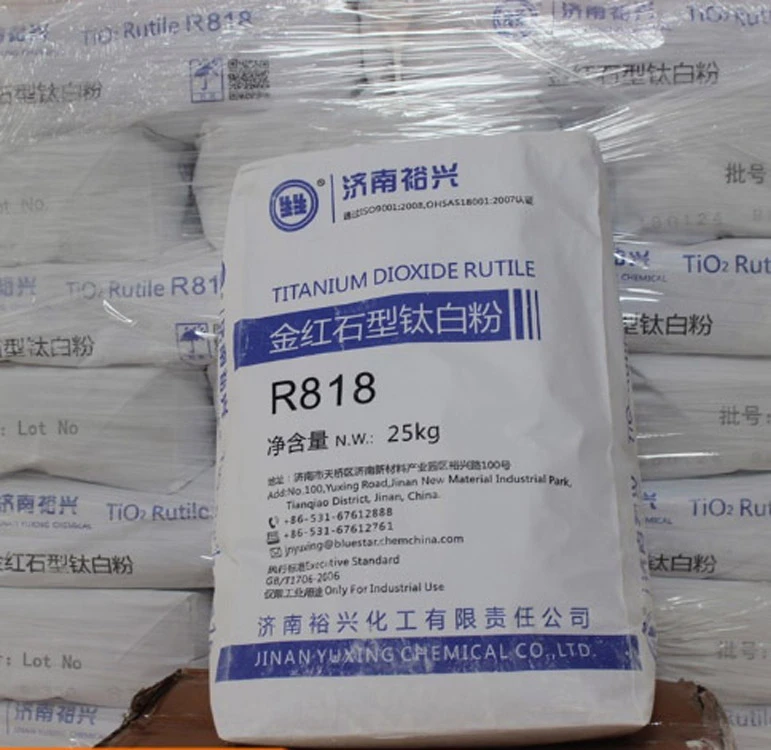
Dez . 07, 2024 10:07 Back to list
titanium dioxid
The Role of Titanium Dioxide in Modern Applications
Titanium dioxide, often referred to as TiO2, is a compound that plays a pivotal role across various industries, including paints, coatings, cosmetics, and even food. Its exceptional properties, such as high refractive index, strong ultraviolet (UV) light absorbance, and excellent stability, make it an essential ingredient in numerous products that we encounter in our daily lives.
The most significant application of titanium dioxide is in the field of pigments. Its brilliant white color and opacity enable it to be used as a pigment in paints and coatings, providing durability and a lasting finish. Titanium dioxide is favored in the production of both water-based and solvent-based paints due to its ability to enhance brightness and improve coverage, which reduces the need for multiple coats. This not only helps manufacturers save on production costs but also contributes to a reduction in paint consumption, making it an environmentally friendly choice.
Moreover, titanium dioxide is utilized in the cosmetic industry. It is a common ingredient in sunscreens due to its capacity to absorb UV radiation, protecting the skin from harmful rays that can lead to sunburn and long-term skin damage. The compound is also included in various makeup products, providing a matte finish and helping to achieve a smooth texture. Its inert nature ensures that titanium dioxide is safe for skin contact, making it a preferred choice for formulators aiming for both effectiveness and safety in their products.
titanium dioxid

In addition to paints and cosmetics, titanium dioxide finds applications in the food industry
. It is used as a food additive, often labeled as E171, to enhance the whiteness and opacity of certain foods and beverages. However, its use in food products has sparked debate concerning safety and health implications. Some studies suggest potential health risks associated with nanometric TiO2, especially relating to its consumption in large quantities. As a result, regulatory agencies worldwide are re-evaluating the safety of titanium dioxide in food applications, leading to stricter regulations and requirements for manufacturers.Another area where titanium dioxide is gaining traction is in the development of photovoltaic cells. TiO2 can be employed as a semiconductor material in dye-sensitized solar cells (DSSCs), which are considered a more cost-effective alternative to traditional silicon-based solar panels. By utilizing titanium dioxide's excellent light absorption properties, researchers aim to create efficient solar cells that can help combat environmental challenges by harnessing renewable energy.
Despite these numerous applications, the production of titanium dioxide is not without environmental implications. The traditional method of producing titanium dioxide involves the chloride or sulfate processes, both of which can generate significant waste and emissions. As awareness of environmental sustainability grows, there is a pressing need for the titanium dioxide industry to innovate and adopt cleaner, more environmentally friendly manufacturing processes. Efforts are being made to recycle waste materials and reduce the carbon footprint associated with TiO2 production, paving the way for a more sustainable future.
In conclusion, titanium dioxide is a remarkable compound that plays an integral role in various industries due to its unique properties. From enhancing the brightness and durability of paints to ensuring effective sun protection in cosmetics, its versatility is undeniable. However, with the increasing scrutiny of its safety and environmental impact, the industry faces the challenge of balancing the benefits of titanium dioxide with the need for sustainable practices. As research and development continue, much can be anticipated in the advancement of applications and the introduction of safer production methods, solidifying titanium dioxide's position in the future of innovative materials.
-
High Quality China Black Iron Oxide Powder Supplier Competitive Price & Fast Delivery
NewsJul.08,2025
-
High Quality Titanium Dioxide Used in Rubber – Trusted Supplier & Factory Price
NewsJul.08,2025
-
High Purity Barium Sulfate Particle Size - Wholesale Manufacturer from China
NewsJul.07,2025
-
Premium Titanium Dioxide Lomon R-996 Supplier – Quality & Wholesale Price from China
NewsJul.07,2025
-
Top Titanium Manufacturers in China - Quality Titanium Dioxide Supplier & Production Line Solutions
NewsJul.06,2025
-
OEM Titanium White Supplier & Factory – High Purity, Consistent Quality for Industrial Use
NewsJul.06,2025
